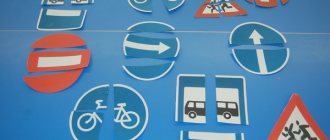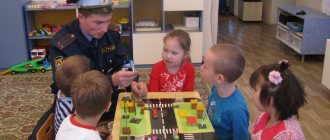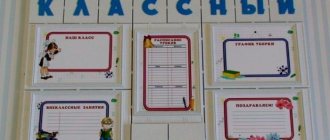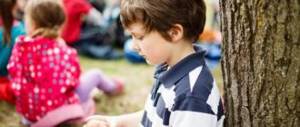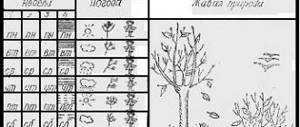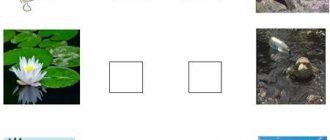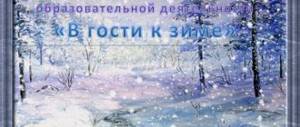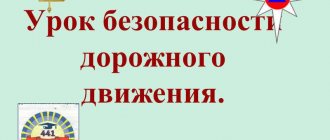How to design a life safety corner in a kindergarten?
Teaching children to behave in emergency situations is an important task for every teacher. To simplify the learning of the material, it can be presented in the form of a game, and a corner on the basics of life safety can be set up, which includes:
An example of the design of a corner of life safety
- Visual preparatory material for training.
- Information about possible emergency and traumatic situations.
- Models of vehicles and equipment of emergency services: ambulance, fire equipment and fire shield.
- Educational and didactic games and competitions, for example, “Smart traffic light” and “Basics of safety”. The purchased version can be replaced with one made by yourself.
- Items for training in the format of a role-playing game: equipment for rescue workers, dolls, floor coverings for studying traffic rules.
- Layouts of personal safety items: emergency telephones, reflective materials, fire extinguisher.
For your information! The handouts presented in this partial area can be varied. For example, you can place an annotation and a printout on the basics of life safety. A well-written version was presented by R. B. Sterkina “Fundamentals of the safety of preschool children.”
The presence of visual materials will help children delve with interest into the process of learning the basics of the rules of life, and the use of a game approach will simplify the learning of the material.
Rescue numbers need to know
Goals of creation according to Federal State Educational Standards
In general, requirements are established for corners in accordance with their subject matter. At the same time, general provisions have been established for all activity centers in a preschool institution:
- They should satisfy children's interests and be exciting.
- The material base must correspond to the age of the pupils.
- The aesthetic design should evoke a feeling of comfort and attract children. This will help create a good mood and arouse interest among the students.
- Optimal location indoors. Convenient use, light and easy access.
- Materials should be convenient and accessible for use by any child.
- It is necessary to take into account the regional component when designing (the study of national life, art, literature, language).
The role and significance of corners
Teaching a child the basics of safety in various areas is an important contribution to his future life. This will help you avoid critical and dangerous situations and can even sleep your life if the situation could not be avoided.
Information will help in case of emergency
The issue of preventing childhood injuries is acute. No one is immune from emergency situations, so knowing the theory and understanding how to act is an important aspect of training.
Folk dance "Kalinka-Malinka" children dance
The corner should develop in children the skills of reasonable behavior, teach them to calmly and correctly respond to emergency situations, introduce them to the basics of environmental culture and introduce them to a healthy lifestyle.
For your information! In addition to the correct reaction and actions in the event of an emergency, it is also necessary to instill in the child the knowledge of where to turn for help in a given situation.
Main tasks of the corner
The main task of the corner is to develop an understanding of the basics of safety among children. The whole process can be divided into the following stages:
- Form ideas about emergency situations and teach ways to solve them. Discuss the first steps in an emergency and where to go for help.
- Instill behavior that is safe for humans and nature.
- Study and analysis of traffic rules not only from the passenger’s side, but also from the driver’s side of the vehicle.
- Develop a cautious attitude towards potentially dangerous situations for nature and people.
- Analysis and elaboration of development scenarios and solutions to possible critical and everyday situations using games or the use of handouts.
In most cases, dangerous situations can be prevented in the early stages or avoided altogether. Teaching this to a child is an important task not only for the teacher, but also for parents, so they also need to be involved in the learning process.
Work in the life safety corner
You can work with the material presented in the safety corner in different ways, which will diversify and deepen the learning process. The following options can be used:
- Visual learning using posters, information stands with illustrations. The stand can be designed as one single stand, covering all areas, or divided into several thematic ones.
- Theoretical lessons on the topic.
- Practical work to study the rules of behavior in emergency situations.
- Modeling possible situations using mock-ups of security service items.
- Working with didactic and educational games.
- Reading poems on the topic of life safety, studying and discussing stories on this topic.
For your information! To teach your child the basics of safety, you can involve parents. To do this, you need to provide them with material in advance that they can use - illustrations, coloring books, manuals.
Observational process in cognition of the surrounding world
The next tool in the hands of the teacher for the comprehensive development of the child is observation.
Using this method helps achieve the following goals:
- while a child observes living nature, a humane attitude towards the flora and fauna is formed and instilled;
- children, observing nature and seeing all the diversity and beauty, experience positive emotions, which contributes to the education of a mentally and harmoniously developed personality;
- observing nature, children are constantly in motion, which has a beneficial effect on their physical development;
- During observation, children constantly encounter and learn something new, and also expand their vocabulary.
The main goal in the observation process is the teacher’s ability to teach children to correctly observe, remember, compare and notice the smallest details for the purpose of further analysis. Thus, children, under the guidance of a teacher, observe natural objects, experiment and learn about the world around them. If you want your child to grow up in a friendly atmosphere and receive a decent preschool education, come to our private kindergarten “Znayka” in Shchelkovo. Our experienced teachers in their practice use all methods of comprehensive development of the child, helping him to reveal himself as an individual. Our kindergarten also has a children's development center, which your child can attend from 10 months.
Design of a safety corner
One of the important stages in teaching children is to create a safety corner in kindergarten. The design of a corner does not have to follow strict rules, but there are nuances that should be observed.
If possible, it is best to place a portable table, as well as shelving or containers for storing handouts and game items. Information posters and illustrations on the topic can be installed on the wall.
There must be signs “Attention!”, “Caution!”
The teacher does not always have the necessary space, and one has to proceed from what actually exists. Despite the available space, the corner may include:
- A single stand formed with the space allowed.
- A prefabricated structure united by a common theme.
- Bright illustrations and slogans “Attention!”, “Caution!” will help draw the attention of children and parents to safety issues.
Educational games and activities for children 3 years old
Creating a space for studying life safety can become one of the topics of the parent meeting. This will help to immediately organize a corner for learning and discuss with parents the maintenance of the learning process outside the educational institution.
Poster and flyer templates for printing
When designing a safety training space, bright posters, illustrations and leaflets are often used. This material can be purchased either ready-made or made independently.
When purchasing ready-made handouts, you should pay attention to the material presented, the correctness of the information provided and the content. Bright colors and headings will help attract students' attention and interest.
When creating posters manually, you can turn to ready-made templates that can be found on the Internet and on specialized websites.
For your information! One of the posters can be created together with children in the form of a teaching lesson.
Model of a cognitive activity center in a preschool environment Center for mathematical development
Model of the center of cognitive activity in a preschool environment
Center for Mathematical Development
Completed by: short-stay group teacher
branch of MBOU Tokarevskaya secondary school No. 2 in the village of Chicherino
Every teacher is constantly searching for new interesting forms and innovative approaches to creating an effective subject-development environment that stimulates the development of preschoolers, to building it taking into account the peculiarities of the child’s perception of the world. When creating such an environment, it should be built taking into account the Federal State Educational Standard for Education, and made information rich, which provides it with a variety of topics, a variety of didactic and information material. All components of the environment must be combined with each other in content, artistic design, and ensure meaningful communication between adults and children.
To implement the educational field “ Cognitive Development ”
Through the process of forming elementary mathematical concepts, centers for entertaining mathematics are organized in groups.
The center solves the following tasks:
• purposeful formation in children of interest in elementary mathematical activities.
• instilling in children the need to occupy their free time not only with interesting games, but also with games that require mental stress and intellectual effort.
The center is equipped with:
- Counting material: toys, small objects, object pictures.
2. Sets of numbers and mathematical symbols for a magnetic board, a set of cards with slots for composing simple arithmetic problems.
3. Entertaining and educational mathematical material: insert boards, insert frames, logical and mathematical games: Dienesh blocks, Cuisenaire sticks, “Geokont-constructor”
and etc.
4.Mathematics workbooks.
5. Sets of geometric shapes
6."Magic Hours"
: models of parts of the day, seasons, months, days of the week.
7. Floor and table abacuses.
8.Counting sticks, counting material.
9. Educational instruments: rulers, centimeters, stadiometer for children and dolls, a set of patterns, compasses.
10. Mosaics, puzzles, games.
11. Alcohol thermometer.
12. Hourglass; mechanical watch.
13. Lever scales with a set of weights.
- Sets of tablets and cards with subject and conditionally schematic images for classification according to 2-3 criteria simultaneously.
- Board-printed games.
- A variety of educational games.
Organization of a developing subject-spatial environment.
One of the conditions for the successful implementation of the program for the formation of elementary mathematical concepts is the creation of a developmental environment ( “Center for Mathematical Development”)
, which allows the teacher to offer children interesting tasks for independent work, and also for children to have the opportunity to choose a game that interests them and play individually or together with other children in a small subgroup. The center should be equipped with materials and attributes, games for recreating images of objects and creative compositions, game exercises and manuals, a variety of visual models of clocks, and should also include calendars of time and months of the year, days of the week, allowing children to practice skills in independent activities, consolidate already existing mathematical concepts and knowledge, discover new things in the field of mathematics through unique children's activities. In the pre-school group, in the entertaining mathematics corner, you can place various educational board games, printed games, chess, dominoes, and games for developing attention. There should be entertaining books with mathematical tasks, books with riddles, tasks - jokes, crosswords, puzzles, labyrinths (from children's magazines, books, sheets with tasks for independent completion, coloring books to introduce children to active mental activity).
In this center it is desirable to place various types of mosaics, puzzles, games for the development of fine motor skills, entertaining and mathematical material that stimulates the development of children ( "Columbus Egg"
, Cuisenaire sticks,
tangrams)
Their purpose is to promote the development of logical and mathematical experience of children based on their mastery of the actions of comparison, comparison, partitioning of sets, algorithms, and construction of a logical statement. The material promotes the development of visual-figurative and logical thinking, intelligence, ingenuity, cognitive interests, personal qualities (purposefulness, exploratory practical and mental actions, perseverance, independence). This is one of the means of preparing children for school.
Playground equipment creates a rich, holistic environment with plenty of space for play.
In the preparatory group for school, it is necessary to create conditions for the in-depth formation of ideas about the quantity, shape, and size of objects. For this purpose, you can use role-playing games with mathematical content, during which the child, fulfilling the role he has taken on, can perform a variety of counting, measuring and other actions ( “School”, “Library”, “Pharmacy”
,
“Atelier”
,
“Workshop of the Good
”,
“Shop”
,
“Confectionery Factory”,
etc.). The choice of the plot of the game and the definition of game rules depend on mathematical concepts. The use of such games stimulates the development of independent cognitive activity of each child.
The development environment is organized with the feasible participation of children, which creates in them a positive attitude and interest in the material, and a desire to play.
Didactic games and game exercises
Didactic games in mathematics containing great motivational potential for the development of preschoolers' active cognitive attitude towards the world around them.
Quantity and count
Development of multiple ideas: “Make pairs”
,
“Which items are there more?”
,
"More less"
.
Consolidating knowledge about numbers from 0 to 9: “Confusion”
,
“Which number is missing?”
,
“Denote by number”
,
“Dial the phone number”
,
“Draw by dots” , “What has changed?”
.
Improving ideas about understanding the relationships between numbers in the natural series: “Name your neighbors”
, “Which number is smaller
(more
by 1?”, “Name the missing
(previous, subsequent)
number”,
“Show with a number”
.
Strengthening the ability to make a number from units within 10: “Make a number”
, “I know 6
(7,8)
names.”
Activating the ability to decompose a number into two smaller ones and make a larger number from two smaller ones within 10: “Find a pair”
,
“Dissemble the neighbors”
,
“Place them in boxes”
,
“Guess”
,
“Show with numbers”
,
“Make a number from two identical ones”
.
Improving the skills of quantitative and ordinal counting within 20: “Who knows, let him continue to count”
,
“Name the neighbors”
,
“Count in different ways”
,
“Fun counting”
,
“Help the numbers find their place”
,
“Get in order.”
Improving ideas about coins, their collection and exchange: “Shop”
,
“Tell me about shopping”
,
“Pharmacy”, “Trip in transport”
.
Magnitude
Consolidating counting actions according to a given measure: “Count in different ways”
,
“Guess how many there are”
,
“How many pairs?”
.
Strengthening the ability to divide an object into 2-8 equal parts: “Birthday”
,
“Divide by all”
,
“Find the whole and its parts”
, “Show and
compare."
Formation of elementary measuring skills: “Order”
,
“Arrange the furniture”
,
“What for whom?”
,
“Who’s next?”
,
“Cook”
,
“Pharmacy”
,
“Shop”
, “Cooking according to the recipe
(large, small pie)
”,
“Which is heavier, which is lighter?”
.
Form
Consolidating ideas about familiar geometric figures and their properties, the ability to recognize figures regardless of their spatial position: “Geometric Lotto”
,
"Guess what's hidden?"
,
“Find by description”
,
“Find by touch”
,
“Shapes from colored mosaics”
,
“Collect a figure”
,
“Dominoes”
, “Arrange by shape
(size, color)
” ,
“Find a pair”
,
“Arrange in boxes”
,
“Draw according to instructions”
,
“Arrange the figures in order”
.
Exercises in the ability to model geometric shapes: “Make a figure”
,
“Wonderful transformations”
,
“Guess the riddle and draw the answer”
, games with sticks and construction sets.
Developing the ability to analyze the shape of objects and their parts and recreate objects of different shapes: “What does it look like?”
,
“Complete the object”
, “Find
(name)
an object of the same shape”,
“Find a pair”
,
“Tangram”
,
“Pythagoras”
,
“Columbus egg”
,
“Draw and build”
.
Orientation in space
Improving the ability to navigate on a limited plane: “Remember and repeat”
,
“Complete the row”
,
“Make a pattern”
,
“Draw the answer”
,
“Artist”
,
“Left, right”
,
“Draw by dots”
,
“Higher, lower”
.
Development of spatial modeling ability: “Whose place?”
,
“Drivers”
,
“Take a friend”, “The road home and the road to school”
,
“Find the hidden object”
,
“Cross the road”
,
“Follow the rules”
,
“Guess what is hidden”
.
Time orientation
Improving ideas about time periods (days of the week, months, seasons)
:
“Week, line up”
,
“Live week”
,
“Name your neighbors”
,
“All year round”
,
“Pick it right”
(lotto),
“Make up the seasons”
,
“Get things in order”
,
“When does this happen?”
,
“Before and After”
,
“Earlier – Later”
.
Developing a sense of time: “Do it on time”
, “
Do it in 1 minute
”,
“Who can assemble the tower faster?”
,
“Who will have time?”
,
“Who came first?”
.
An exercise in determining and setting time by clock: “What time is it?”
,
“Our Day”
,
“Check the Time”
,
“Earlier - Later”
.
